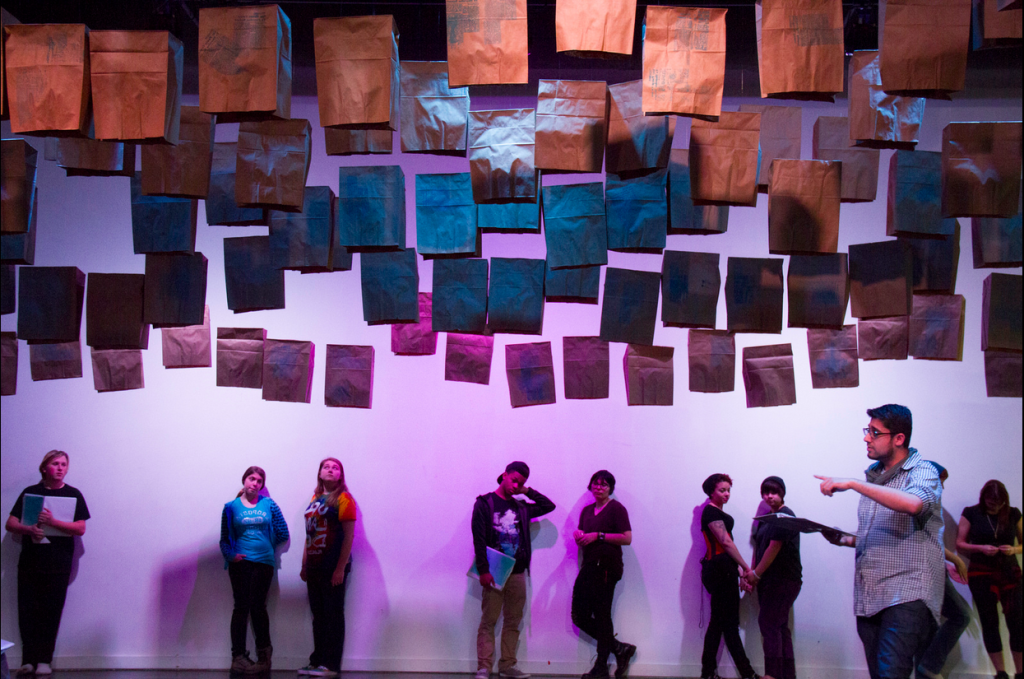By GALA Expert
December 6, 2023

Posted on: July 6th, 2015 by Adil Mansoor
This past June, I had the opportunity to present at the first Cultural Equity Preconference at the 2015 American for the Arts (AFTA) gathering in Chicago, IL. Over 100 people spent three rigorous days thinking about art, diversity, and their own communities. Each presentation created space for me to consider, reflect, and question. From chats over lunch about gay zombie theater to bus rides investigating the urgent need to include dialogue about ability and accessibility in social justice movements, every interaction was steeped in expansive conversations.
During my time at the conference, I was dangerously close to feeling like I don’t get to engage in conversations like this in Pittsburgh. However, that simply isn’t true. Here in Steeltown, I am a theater artist and youth worker wearing many hats and constantly thinking about, and hopefully impacting, who engages in art. I facilitate youth programming at The Andy Warhol Museum, create original performance with queer and allied teens atDreams of Hope, and generate socially engaged theater with Hatch Arts Collective. So really, it seems that I can’t talk about anything other than diversity and art.
That said, there was a lot happening in Chicago that made the dialogue feel unique. Being at the AFTA pre-conference afforded me the opportunity to be surrounded by dozens of folks constantly thinking about privilege, access, and the arts. And unlike much of my time in Pittsburgh, the conference provided me with 72 continuous hours when I wasn’t the only queer person of color in the room. I didn’t have people turning to me every time someone asked a question about diasporic arts or LGBTQ+ experience. Instead, there were many voices in the room that could respond. We weren’t in danger of “single stories” (as Chimamanda Ngozi Adichie’s would say) curating the experience of entire communities.
There is an immense pressure put on minority folks amidst overwhelmingly straight white groups to not only sum up the experience of minorities, but to validate or explain decisions made that directly impact minority and marginalized communities. Chicago provided me with time away from that pressure to have a chance to breathe and realize how revolutionary it is for multiple folks from minority communities (pluralism) to be at the table.
Reflecting on my time at AFTA has led me to be even more passionate about finding and facilitating spaces in Pittsburgh where multiple voices from minority experiences are empowered. The Transformative Arts Process (TAP) at the Heinz Endowments is thinking about cultural equity quite diligently.
TAP “is focused on building the field of those working in and through the arts in African American and distressed neighborhoods.” An advisory board has been assembled to bring this mission to life. The makeup of the advisory board alone sets this work apart from so many initiatives I’ve been a part of. Nearly everyone on the board works or lives in the communities TAP is hoping to impact, more than 80% of the board members are people of color, some identify as queer, and a third of the group is currently in high school. This works.
Individuals are not being asked to represent the entirety of marginalized experiences. This is key to developing culturally equitable communities and authentic arts programming. The communities at large must be at the table, and not as tokenized representatives from specific communities. No accident that during AFTA, TAP’s work in Pittsburgh caught the attention of leaders from across the country. I hope leaders in Pittsburgh also take notice.
Attending the American for the Arts Conference was an incredible opportunity. Being surrounded by national leaders was inspiring, motivating, and rejuvenating. It also fueled my commitment for the work happening here in Pittsburgh. I am grateful to have moment to reflect and celebrate, and now am ready to get back to work.
